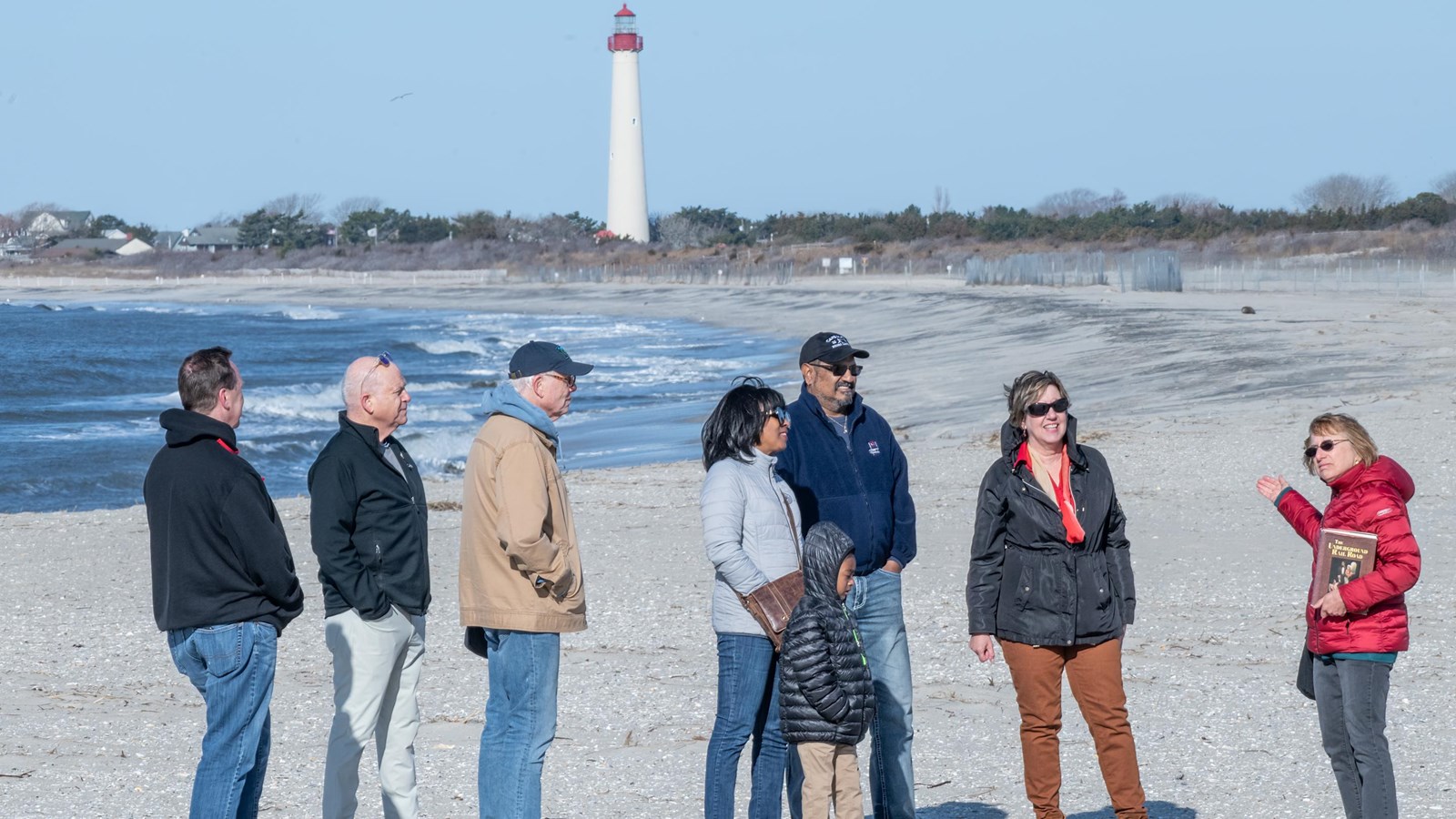Last updated: April 12, 2022
Place
Beach Boardwalk at South Cape May Meadows

Frank Scott
The first stop on Cape May MAC (Museums+Arts+Culture)'s Underground Railroad Tour (a Network to Freedom Program), the Beach Boardwalk at South Cape May Meadows, allows visitors to immerse themselves in a viewshed that contrasts non-slavery New Jersey and pro-slavery Delaware and Maryland. Across the bay, on the horizon, is Delaware, a slave state before the Civil War. Further down the beach is the Cape May Lighthouse, a true beacon to enslaved people who braved the dangerous currents of Delaware Bay to reach the free state of New Jersey.
In the 1850s, Cape May, at the southernmost tip of New Jersey, was a vibrant summer resort and a meeting place for North and South, attracting both southern planters and northern abolitionists and Underground Railroad leaders.
Many stories of freedom seekers crossing these waters are recounted on the trolley tour. William Still, coordinator of the Underground Railroad in the Mid-Atlantic wrote two vivid accounts. In one story from his book, The Underground Railroad, Still wrote that in 1860 six freedom seekers set out from Worchester County, Maryland:
“The Delaware Bay lay between them and the Jersey shore, which they desired to reach. They did not calculate, however that before leaving the Delaware shore they would have to contend with the enemy. Near Kate’s Hammock on the Delaware shore, they were attacked by five white men in a small boat.”
Bloodied and wounded the freedom seekers escaped and finally landed on this beach. In the morning they found an oyster boat captain who offered to take them to Philadelphia. “When they found the captain, they were not far from Cape May light-house,” wrote Still.
Due west of the beach across the Delmarva Peninsula is Maryland’s Eastern Shore, the birthplace of Harriet Tubman. In the summer of 1852 Harriet Tubman came to Cape May to earn money as a cook to continue her freedom runs. That fall she left, crossing the bay and going back to the Eastern Shore to lead nine family members and friends to freedom. She may have returned to the city one or two other summers according to the New Jersey Historical Commission.
A few blocks from the beach at the intersection of Lafayette and Franklin Streets is an area that in the 1850s was alive with the discussion and debates of Philadelphia’s Black abolitionists and Underground Railroad leaders who vacationed in Cape May. Harriet Tubman had already connected with this network in Pennsylvania and would have felt comfortable among them. She may even have worked at the Banneker House, at the time one of the country’s only seaside resorts for Black visitors. It stood next to the summer home, built in 1846, of the remarkable Stephen Smith, a close collaborator of William Still. Smith’s Cape May house still stands and is a Network to Freedom member. Smith, after buying his freedom, ran a successful coal and lumber business. Like Tubman he conducted dozens of people to freedom, in his case hiding them in secret compartments in his railroad cars.
